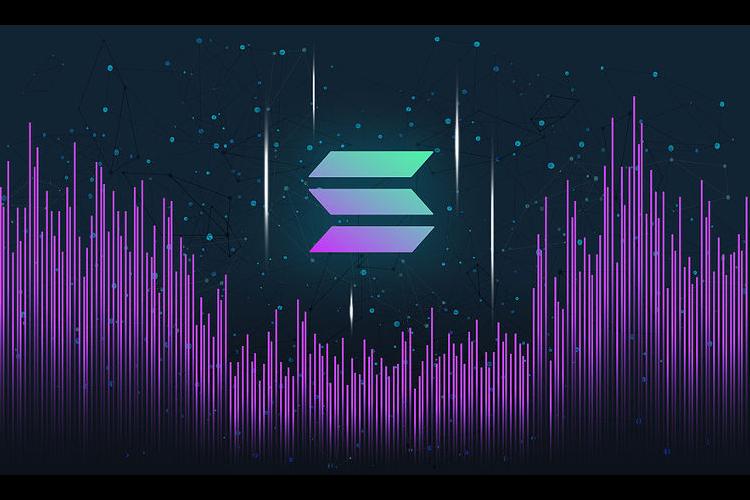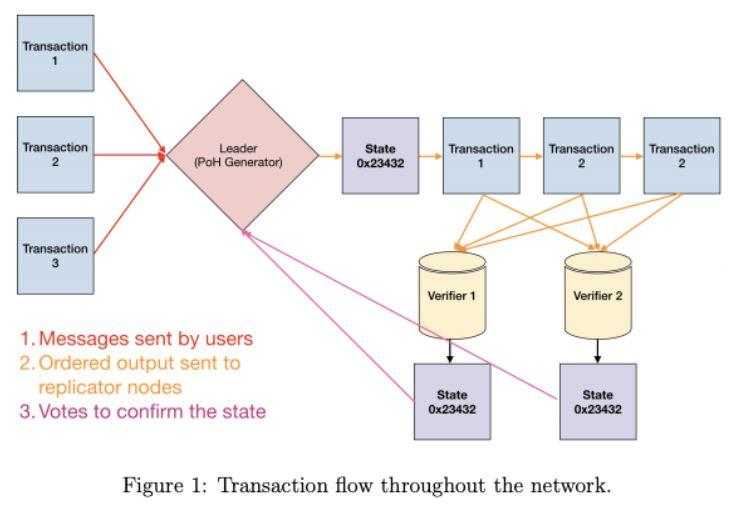Solana Blockchain and Proof of History

Solana is an open-source Blockchain platform designed to accommodate decentralized and scalable applications. Solana is an open-source Blockchain platform designed to accommodate decentralized and scalable applications. It was founded in 2017 by a team of software engineers and CEO Anatoly Yakovenko has prior experience at Dropbox and Qualcomm.
Benefits of Solana Blockchain
Solana can process a very high number of transactions (theoretically around 710,000 transactions per second). On average, it can handle about 50,000 of them smoothly. Another of its strengths is its significantly lower cost per transaction compared to rival Blockchains like Ethereum. To do this, the Solana Network has been designed based on a new consensus for transactions, the so-called Proof of History. Let's see together what it is.
Solana and the Proof of History (PoH)
Proof of History (PoH) is designed to create a Ledger with a verifiable time step. Essentially, it is a Blockchain algorithm that is used to synchronize time and record it in the Blockchain. You can then create a historical record that shows that an event occurred at a specific point in time. The weight therefore of the Blockchain is lighter as the time issue is removed, thus making it more streamlined. Proof of History also ensures that the Blockchain can work quickly while still maintaining:
- Security
- and Decentralization
How Proof of History (PoH) works
PoH is a high-frequency verifiable function, the so-called VFD (Verifiable Delay Function). A VFD requires a specific number of sequential operations to be analyzed, but produces a unique output that can be efficiently and publicly verified.  PoH is a computational sequence that can provide a way to cryptographically verify the passage of time between two events. It uses a cryptographically secure function written in such a way that the output cannot be predicted from the input, but must be fully executed to be generated. The function is executed sequentially on a single core. And it has its previous output as input. In addition, the current output is periodically recorded and how many times it is called is calculated. The output can then be recalculated and verified by external computers in parallel that control each segment of the sequence on a separate core. Data can be recorded in this sequence by applying it (or a hash of some data) to the state of the function. Storing the state, index, and data as it was added into the sequences provides a timestamp that ensures that the data was created before the next hash was generated in the sequence. This design also supports horizontal scaling, as multiple generators can synchronize with each other by shuffling their state into each other's sequences. While other Blockchains require validators to communicate with each other to agree that time has passed, each Solana validator maintains its own clock by encoding the passage of time in a simple SHA-256 verifiable delay function (VDF), with sequential hashing. In other Blockchains, it is essential to reach consensus on the time it takes to mine a block, as well as the time of transactions in the block. Therefore, the timestamp is important as it lets the network know that transactions occurred in a certain sequence.
PoH is a computational sequence that can provide a way to cryptographically verify the passage of time between two events. It uses a cryptographically secure function written in such a way that the output cannot be predicted from the input, but must be fully executed to be generated. The function is executed sequentially on a single core. And it has its previous output as input. In addition, the current output is periodically recorded and how many times it is called is calculated. The output can then be recalculated and verified by external computers in parallel that control each segment of the sequence on a separate core. Data can be recorded in this sequence by applying it (or a hash of some data) to the state of the function. Storing the state, index, and data as it was added into the sequences provides a timestamp that ensures that the data was created before the next hash was generated in the sequence. This design also supports horizontal scaling, as multiple generators can synchronize with each other by shuffling their state into each other's sequences. While other Blockchains require validators to communicate with each other to agree that time has passed, each Solana validator maintains its own clock by encoding the passage of time in a simple SHA-256 verifiable delay function (VDF), with sequential hashing. In other Blockchains, it is essential to reach consensus on the time it takes to mine a block, as well as the time of transactions in the block. Therefore, the timestamp is important as it lets the network know that transactions occurred in a certain sequence.
How Solana Blockchain Works
The Solana blockchain works by performing 6 basic steps:
- At any time a node in the system is designated as the Leader
- The Leader sorts user messages and orders them so that they can be processed correctly by the other nodes in the system, thus maximizing data flow
- The Leader then executes transactions that are stored in Ram
- The leader will then publish the transactions and the final state signature to the verifiers (replication nodes)
- The verifiers will then execute the same transactions on their copies of the state and publish their state signatures if they receive confirmations
- The published confirmations will then serve as votes for the consensus algorithm

The Solana Token (SOL)
The SOL token is the native currency in the Solana ecosystem. The token can be transferred to nodes within the Solana cluster in exchange for running on-chain programs or validating its output. Another use of SOL is to execute micropayments known as lamports. The current circulating supply of SOL is 26 million, out of a maximum supply of 489 million SOLs. Thanks to SOL, it is also possible to do some staking for rewards. Conlusions The new platform (still in Beta phase for some aspects) is definitely a strong competitor to Ethereum and Bitcoin, as it shows a new structure for transaction verification and a more streamlined consensus algorithm. It has made and will still make rumors in the coming years.